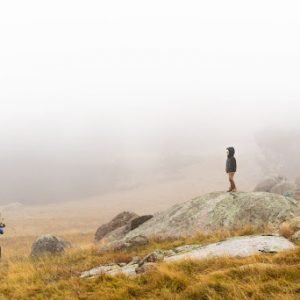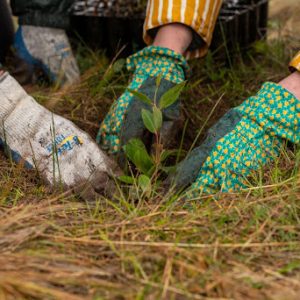One of the most effective ways to restore biodiversity and sequester carbon is by planting trees. The reforestation project at Widgewah Conservation Sanctuary provides a perfect example of the kind of project that organisations like the Reforest community can be a part of. These reforestation projects plant trees to restore native forest landscapes, remove CO2, and help put a halt to extinctions.
How it started
An hour or two north of Melbourne, this property was cleared for grazing decades ago. Across the five hundred hectares of property there would once have been at least five different ecological vegetation classes. With a bold vision to see their property returned to its natural state, the landholders assembled a team of project managers, carbon sequestration experts and ecologists to define a restoration project for the site. Reforest is a climate restoration organisation that is supporting this amazing project.
Reforest is a platform for Australian individuals and businesses to support such projects by paying for trees to be planted to remove the carbon emissions from their everyday transactions. Their tree purchases are helping to restore the landscape to its natural state by planting thirty different native species which will match up with the ecological vegetation classes of the pre-1770s landscape. Each hectare planted will remove over 220,000kg of CO2 in the first 10 years after the trees go into the ground.
Trees not only can help regenerate the landscape but they provide new habitats for a number of unique species, including critically-threatened Southern Brush-tailed Wallabies. Only around sixty are left in the wild and in captivity. This project will change that. Eighty hectares at this site will support up to two hundred rock wallabies and will help bring them back from the brink of extinction.
A predator-proof fence has been installed, and a group of the last remaining members of this species will be introduced from the Mt Rothwell breeding program to this site to help bring them back from the brink of extinction.
How it’s going
The project has planted over 30,000 trees in the past 6 months! One thousand of these were a community planting event hosted by Reforest and the 2040 Film team. The trees that were planted are a mix of species native to the area, and will restore the landscape to the grassy dry forest vegetation class that it once was before it was cleared for agriculture. Over the next ten years these trees will have removed 8,000 tonnes of CO2 from our atmosphere.
Planting the trees is just the first part of the job. The project team do everything possible to make sure they survive and thrive:
- Conservation covenants to legally protect your trees against clearing.
- We check on them regularly, in-person and remotely.
- Funds are provided upfront to get the project underway, and over time as your trees are cared for.
Projects we partner with should generate real biodiversity and/or social benefits in addition to the CO2 being removed. Our community wants our partnerships to be more than just carbon removal, but rather an opportunity to see natural landscapes restored to their native condition, reviving local ecosystems and tapping into the long history of indigenous skills and knowledge about land management.
This project is being project managed by carbon market experts Market Advisory Group, with input from biodiversity specialists Odonata and the Mt Rothwell reserve. The Widgewah conservation sanctuary project is possible due to the great vision and commitment of the private landowners who have undertaken the project.
“We are proud that our platform lets people be part of projects like this by planting trees in them to remove CO2 and restore ecosystems” says Daniel Walsh, CEO and founder of Reforest.
This high quality reforestation project that is restoring biodiversity as well as sequestering carbon is an example of what can be done to help heal the planet for future generations. By planting trees, you’re not only putting a positive dent into CO2 emissions but also restoring native vegetation and providing habitat for threatened species that are on the brink of extinction.
If you want to help restore our planet’s health by sequestering carbon or redressing ecological damage from previous clearings, check out our business platform.



